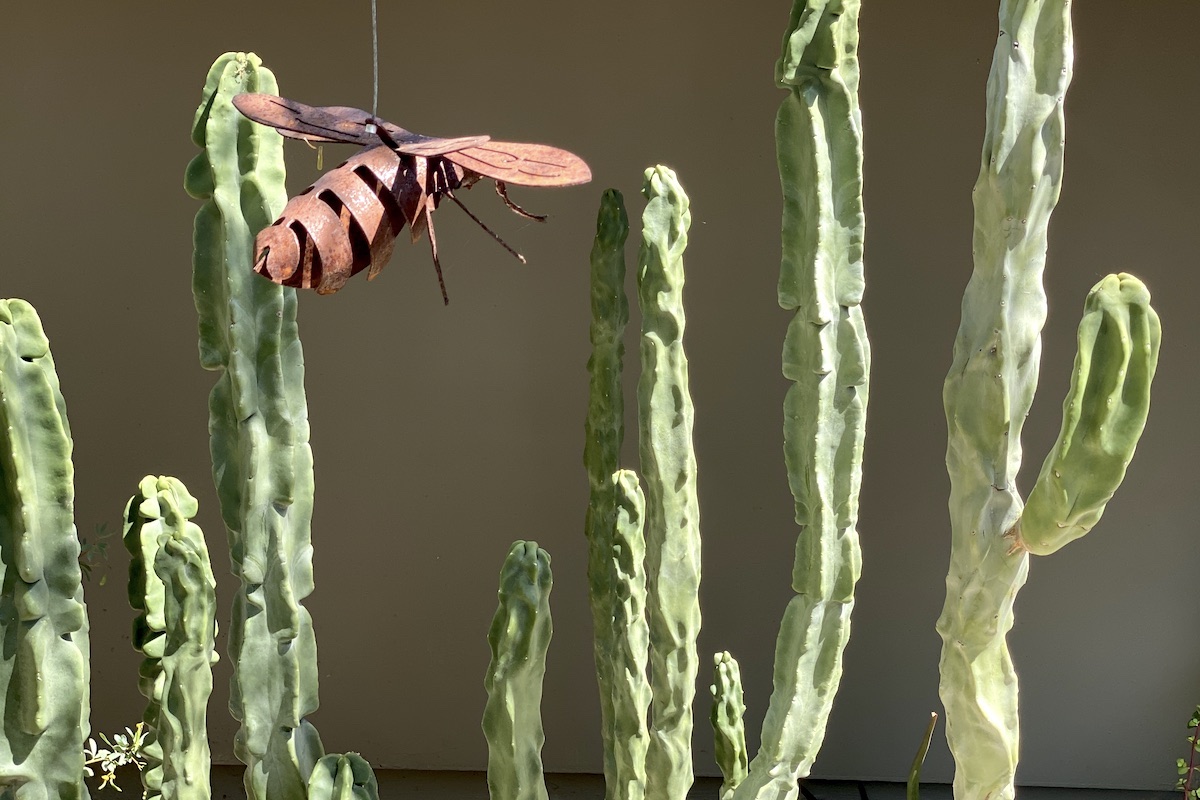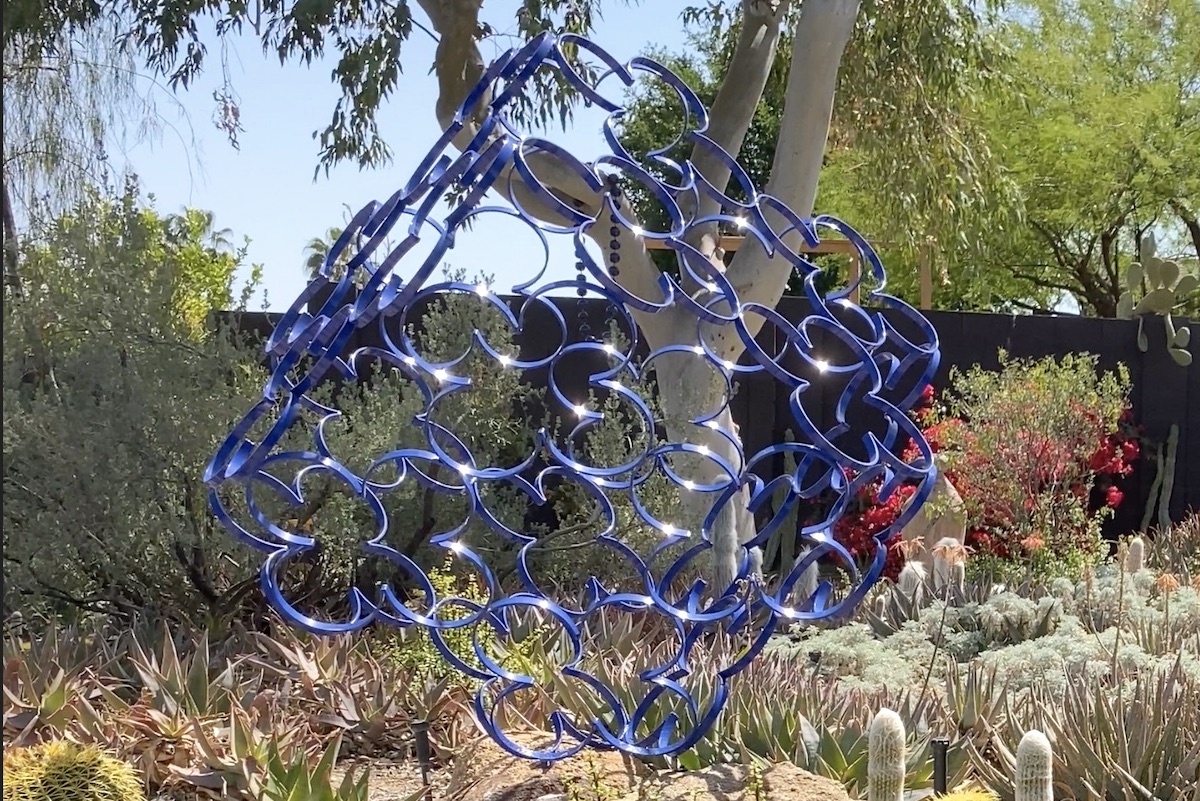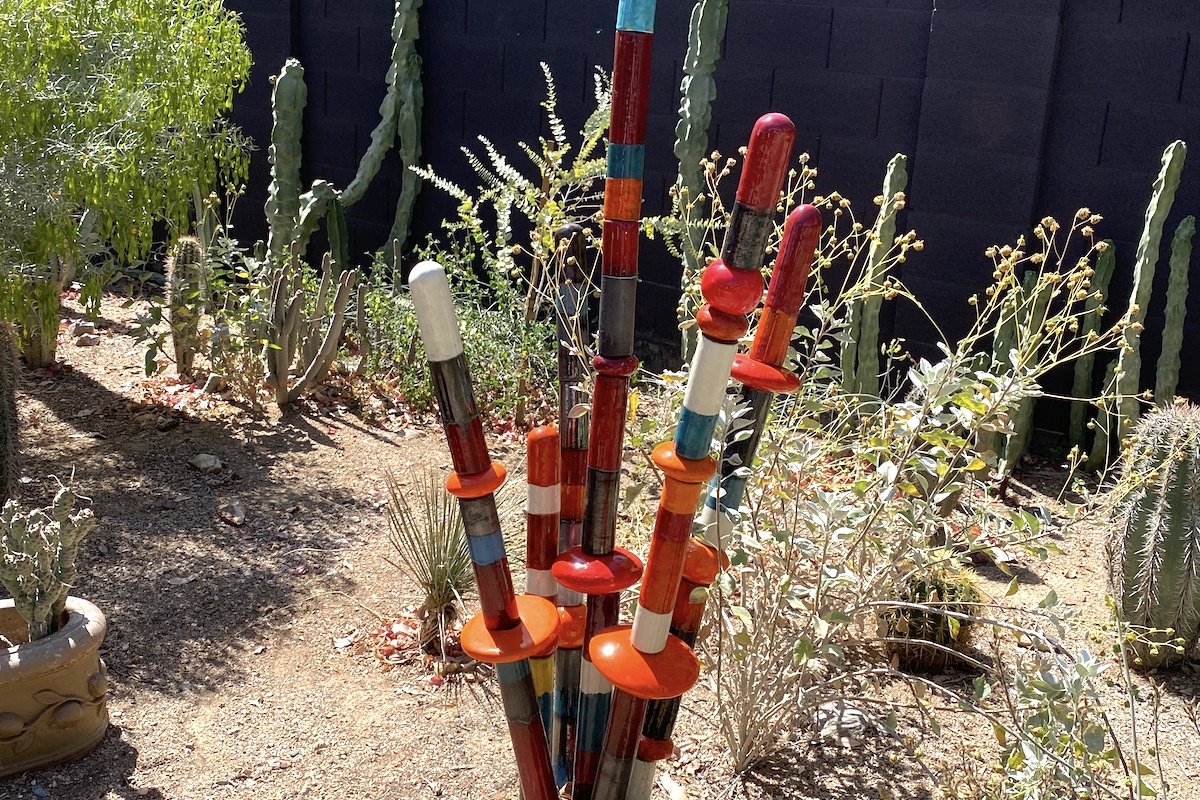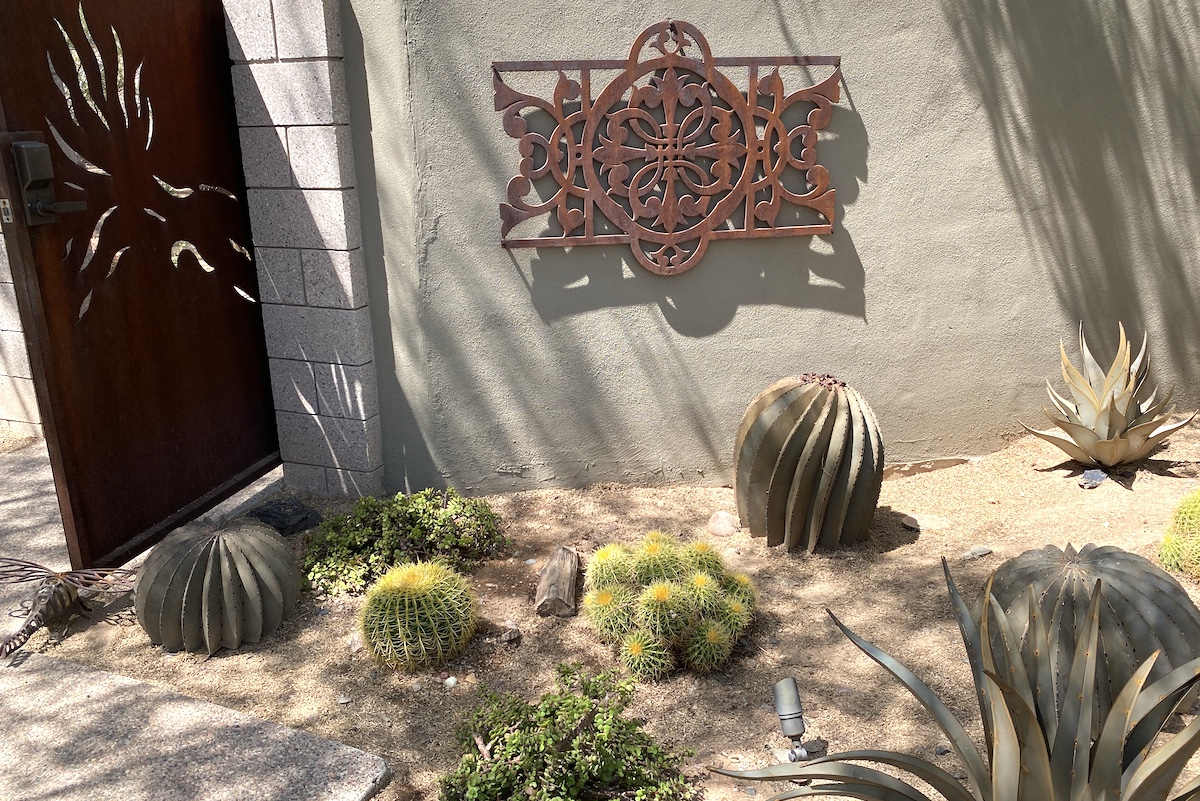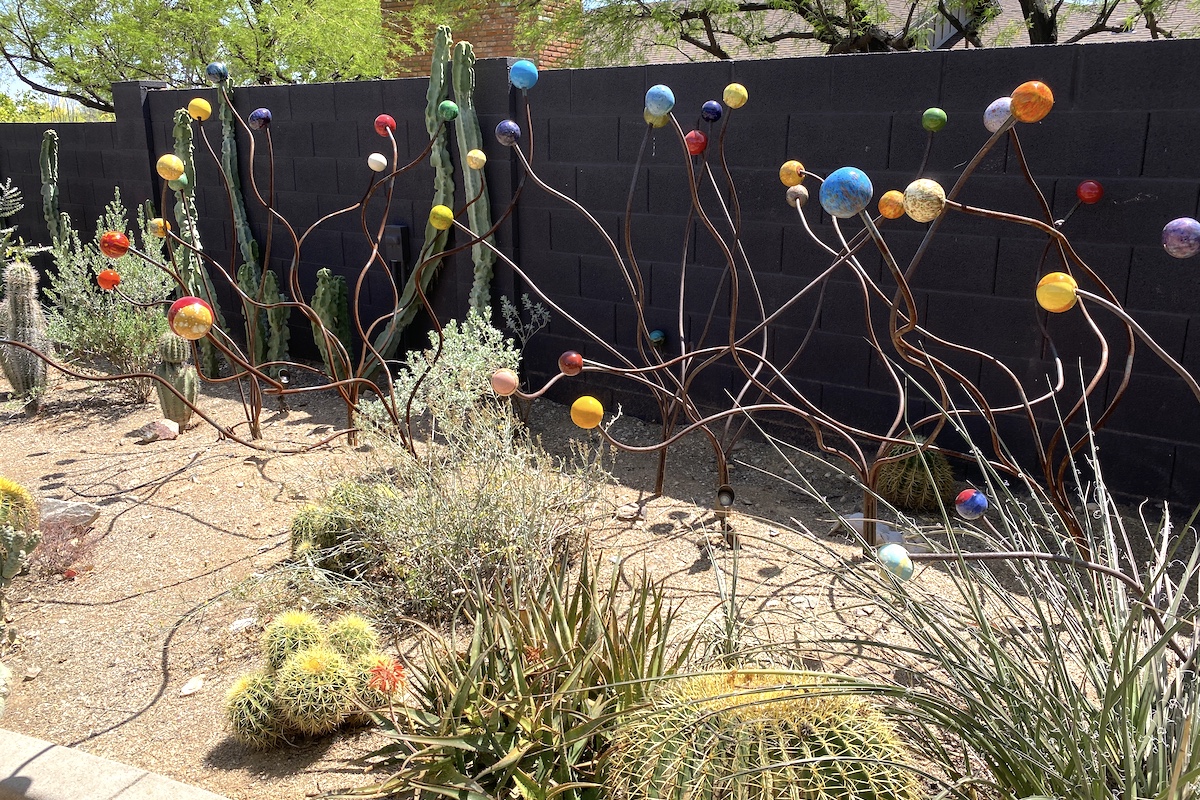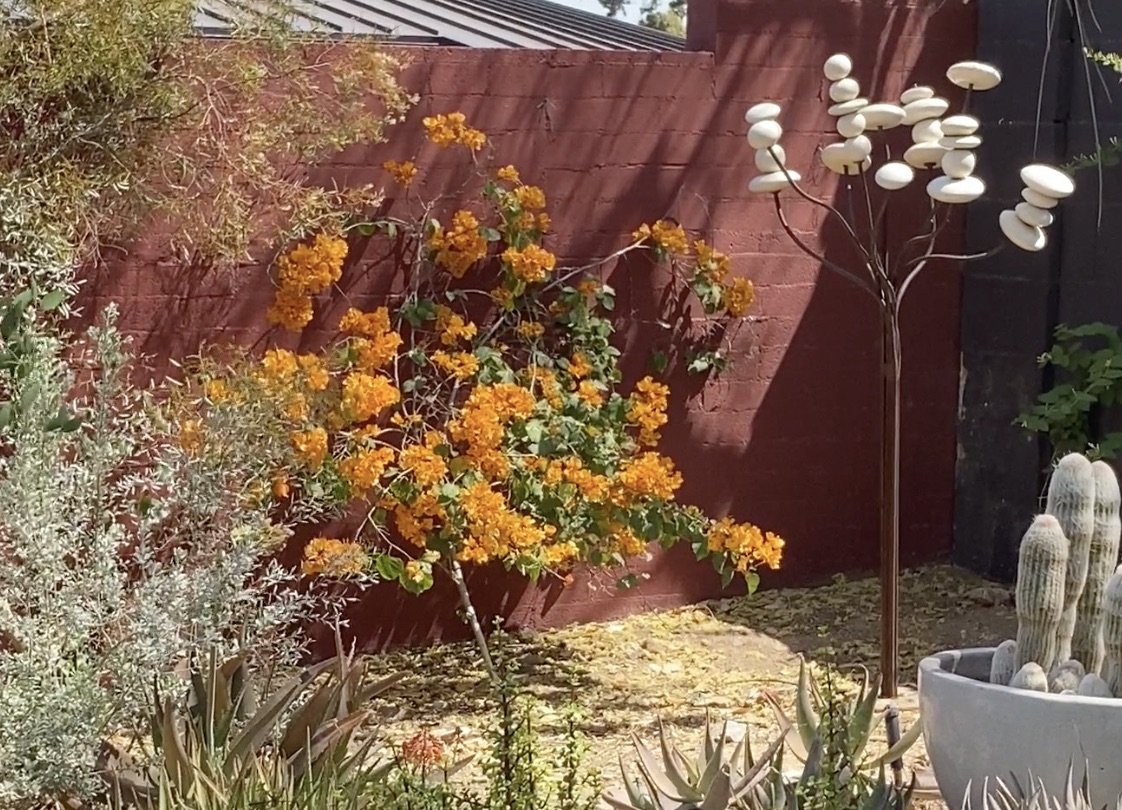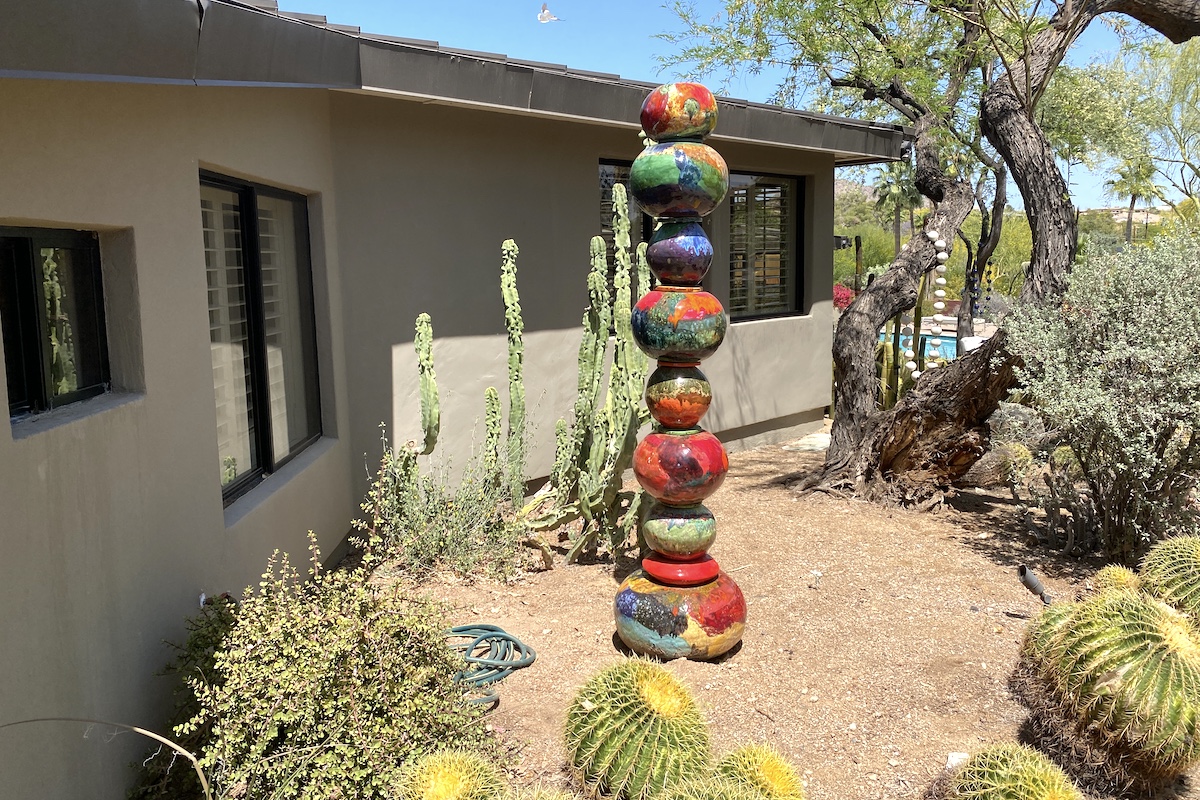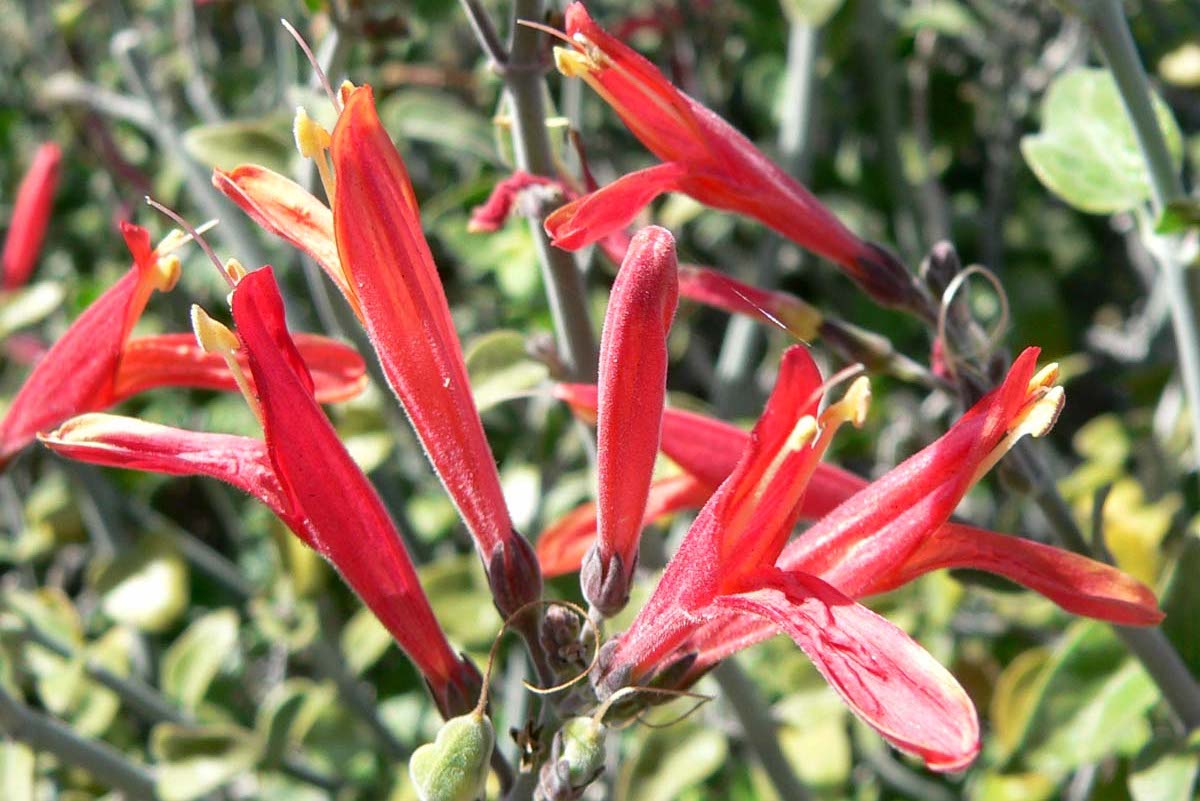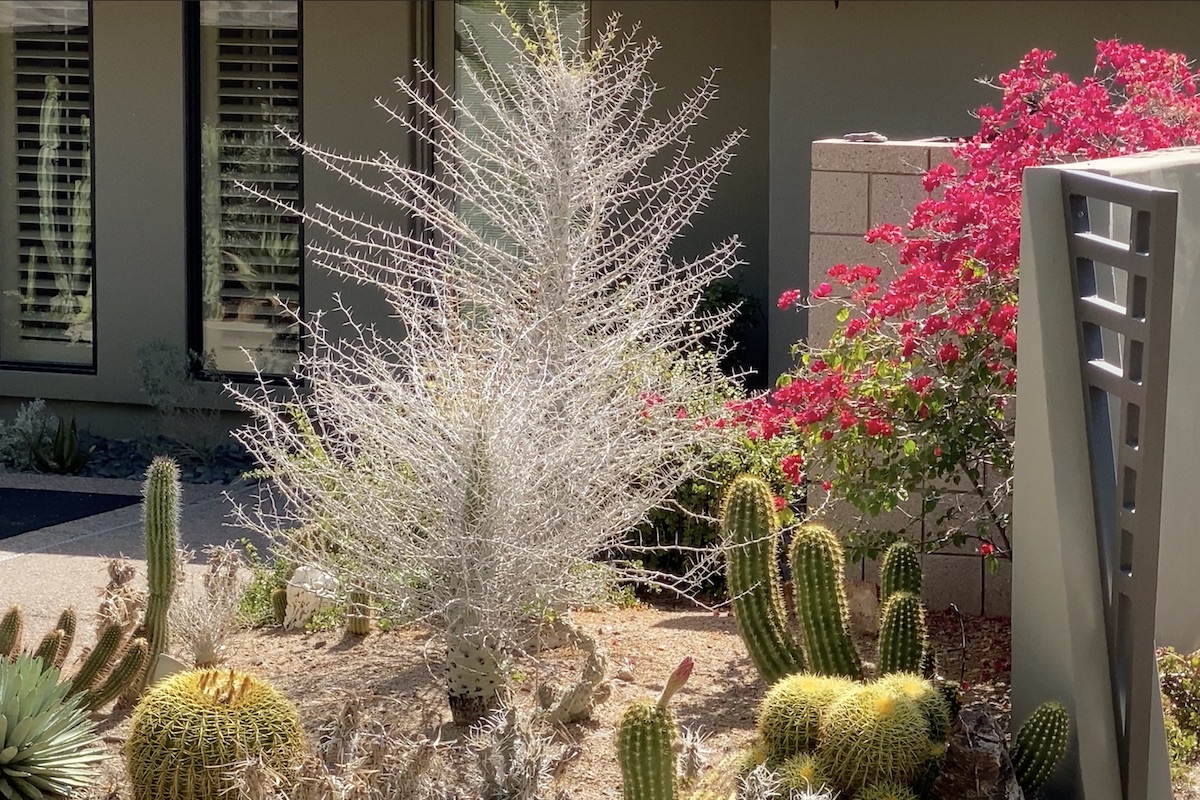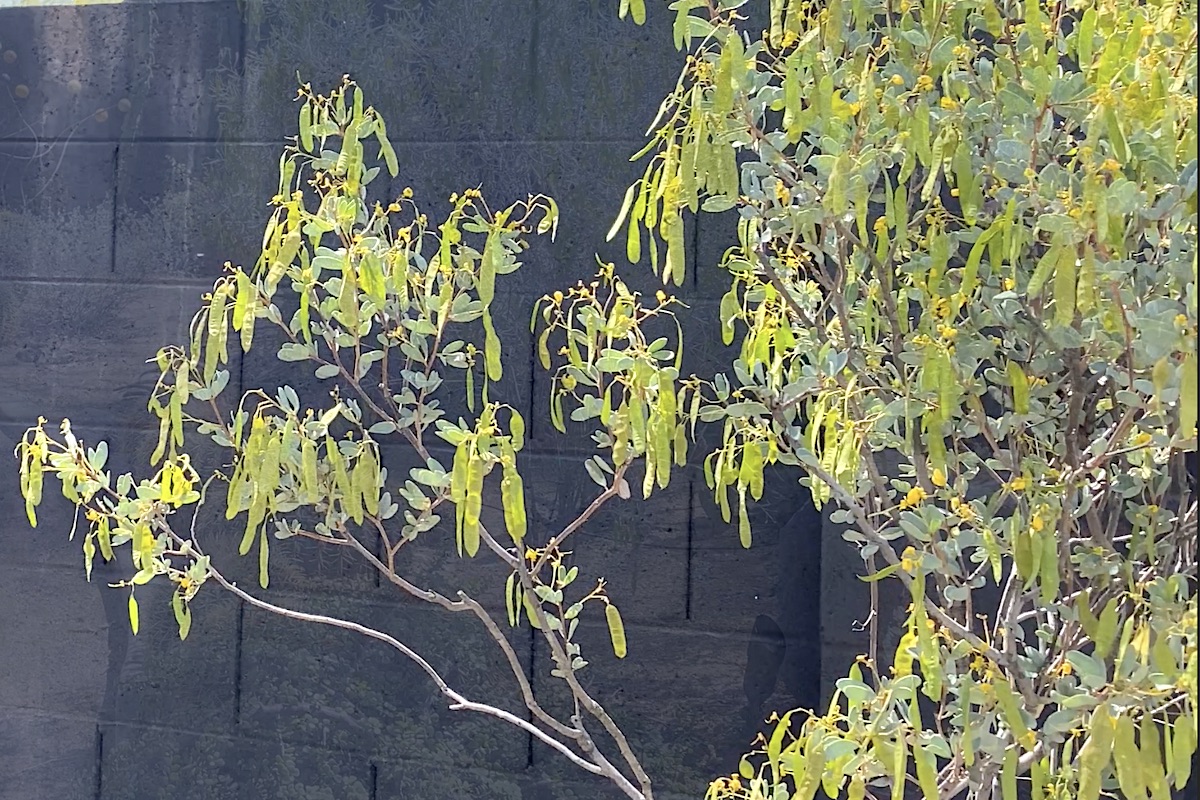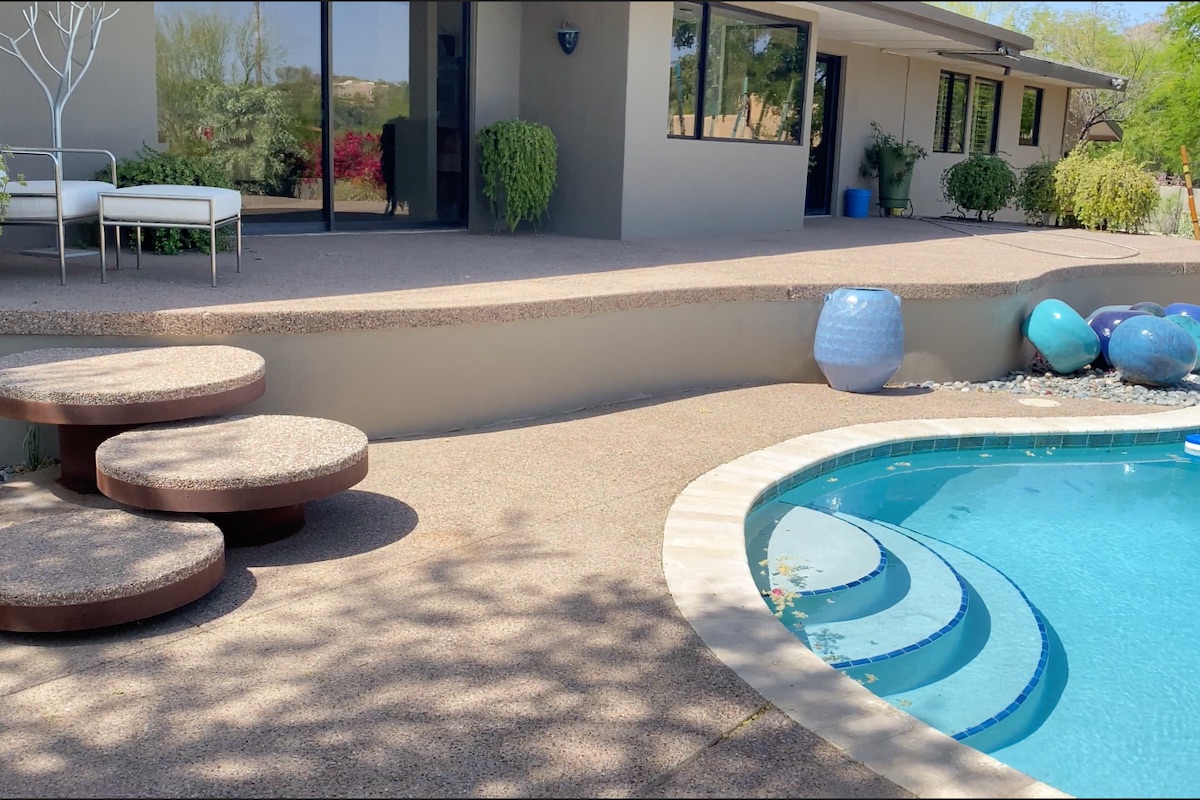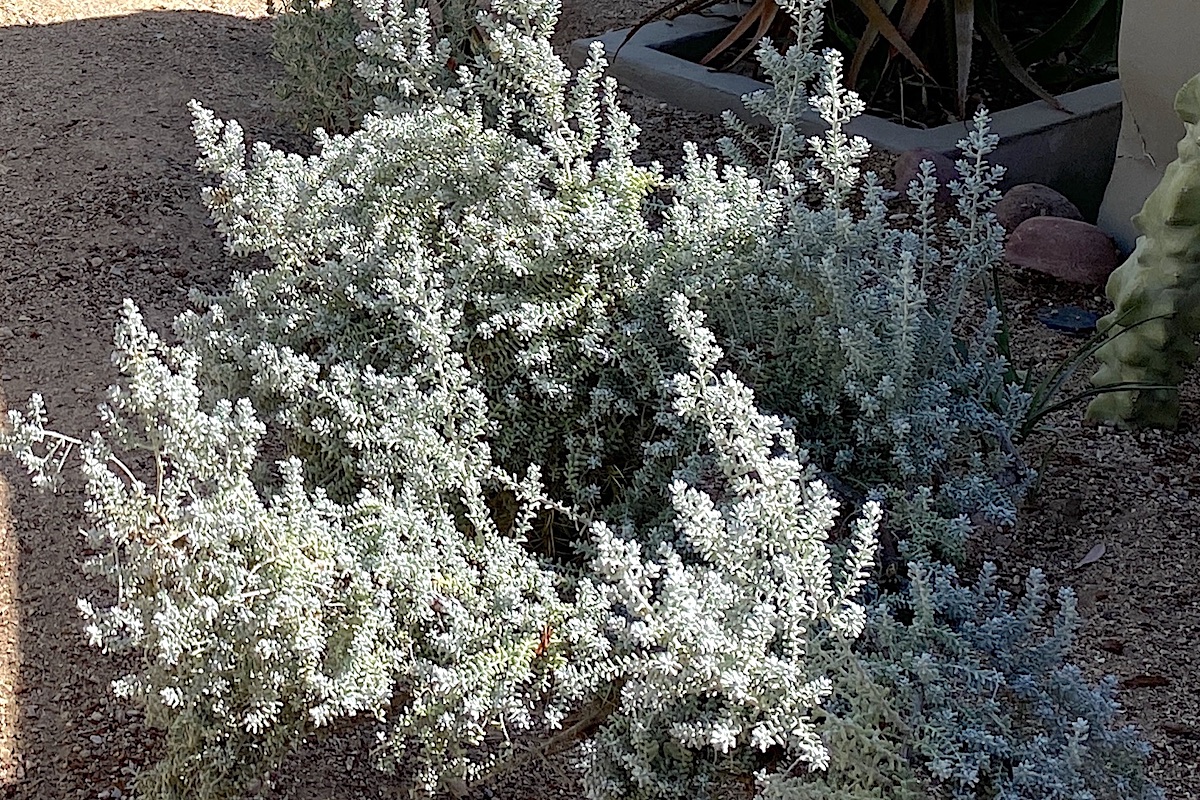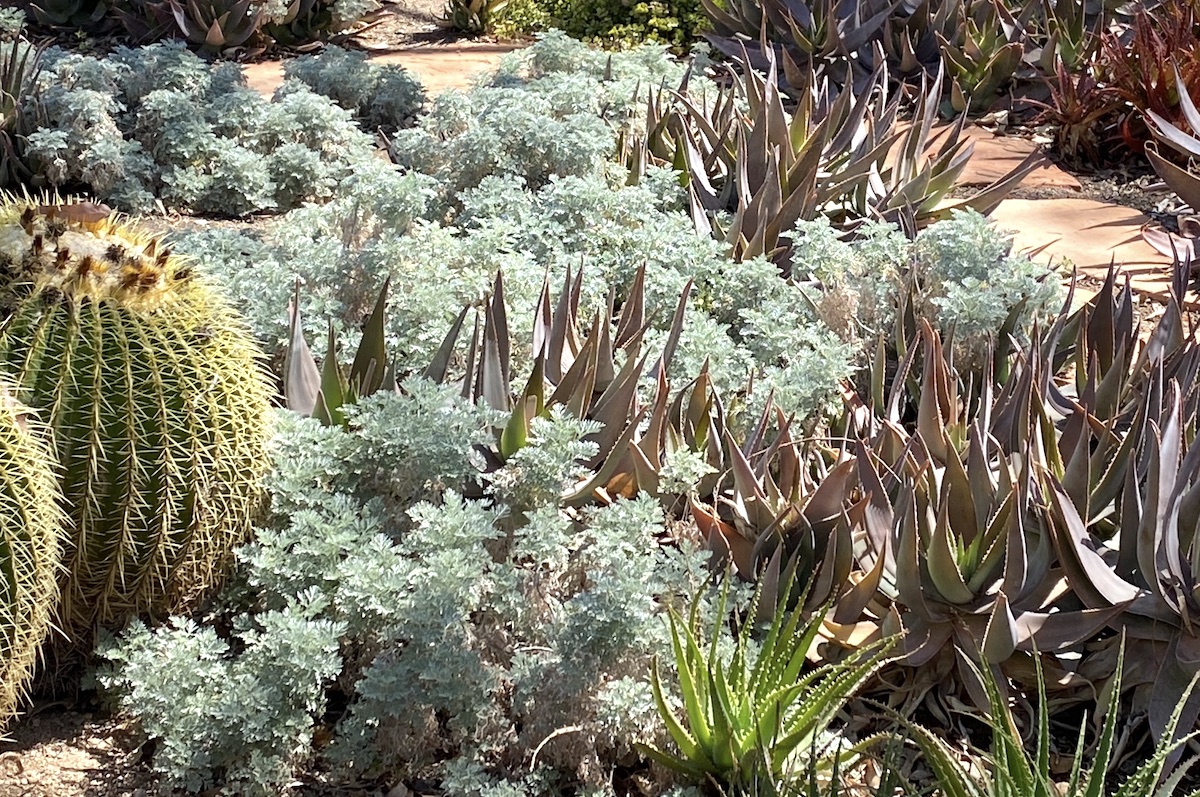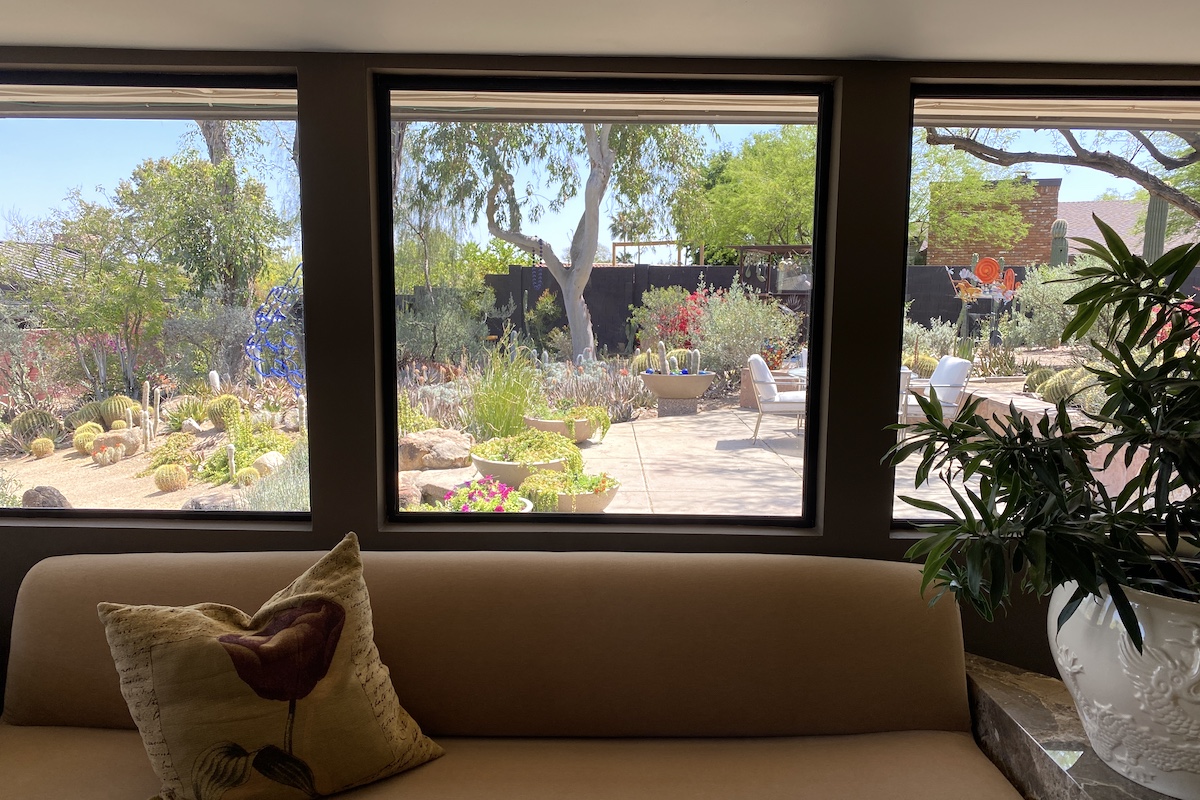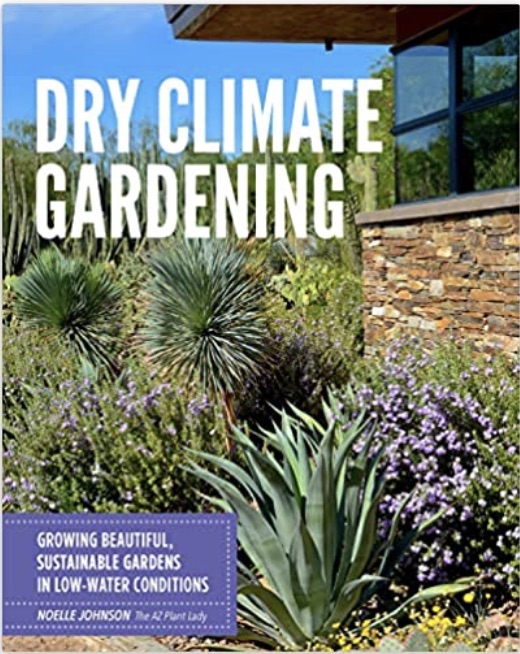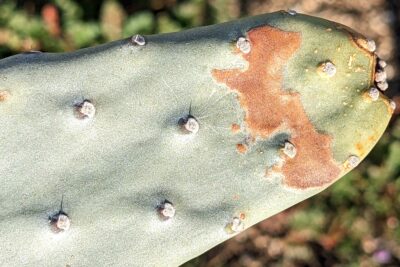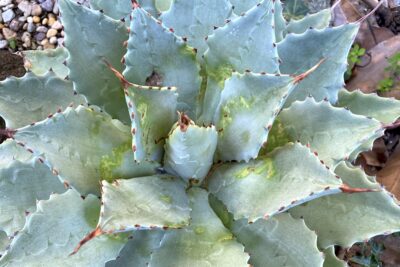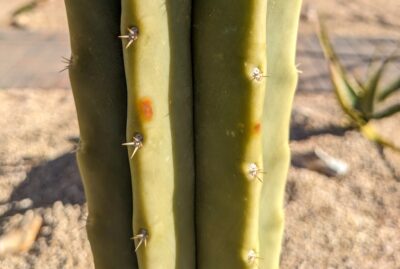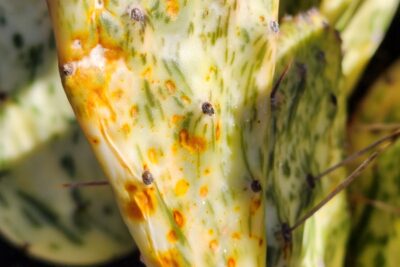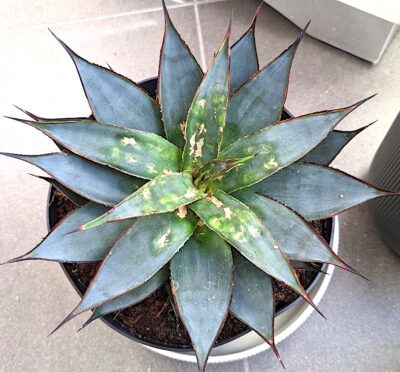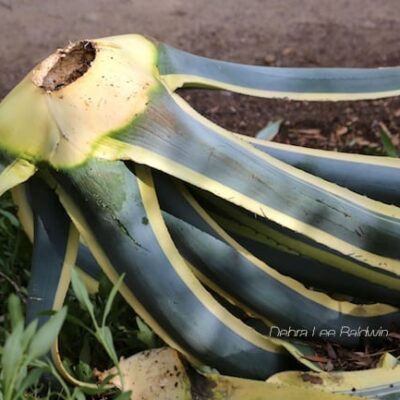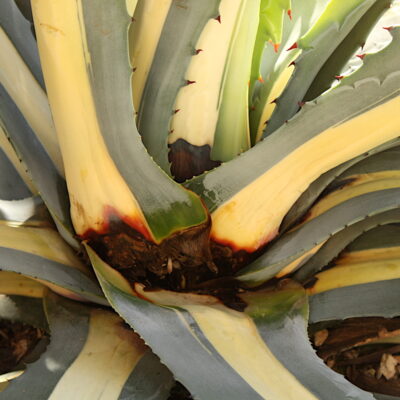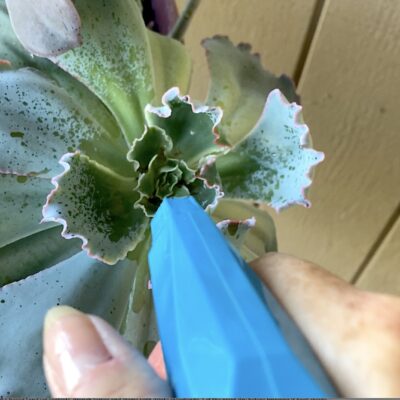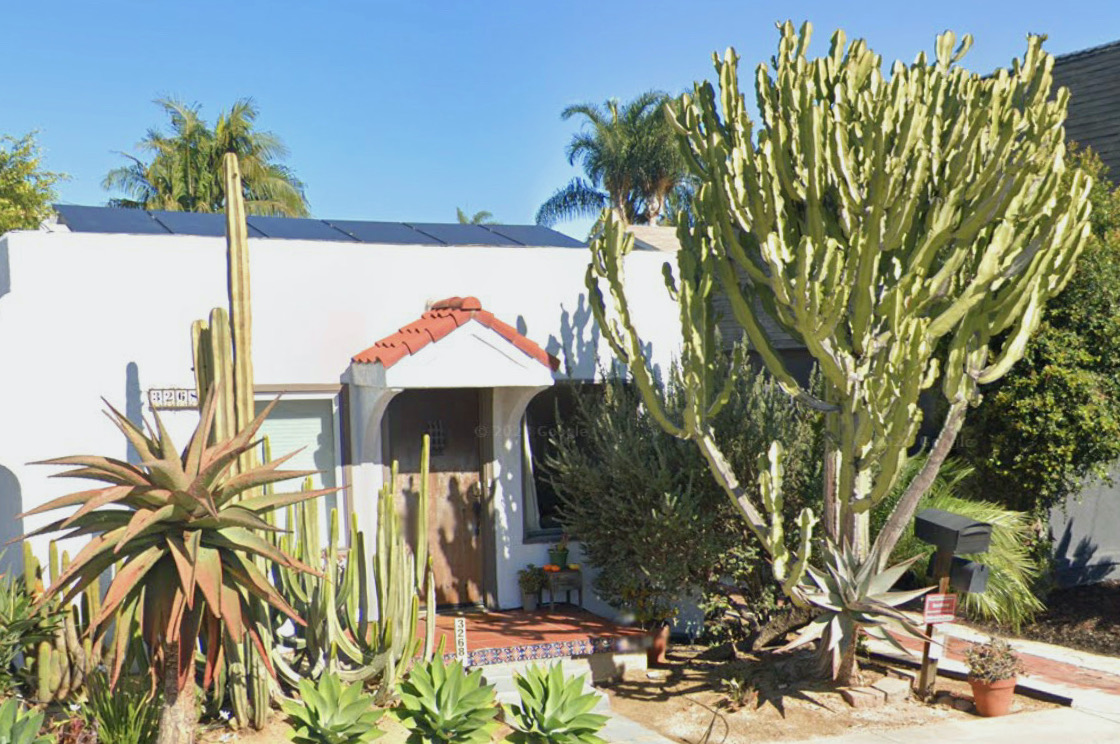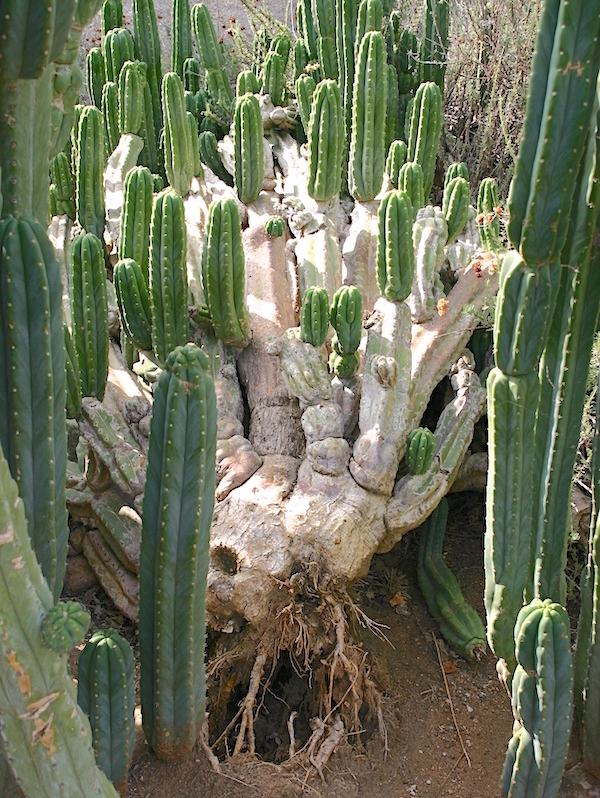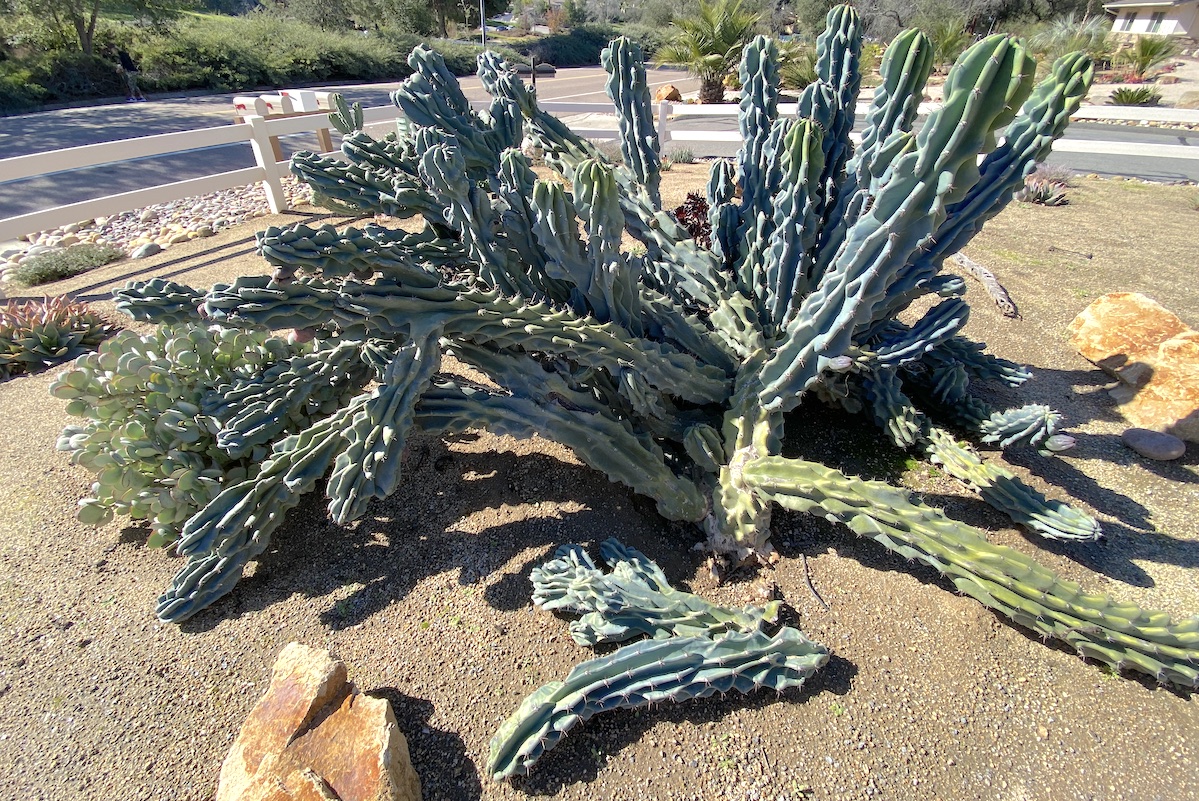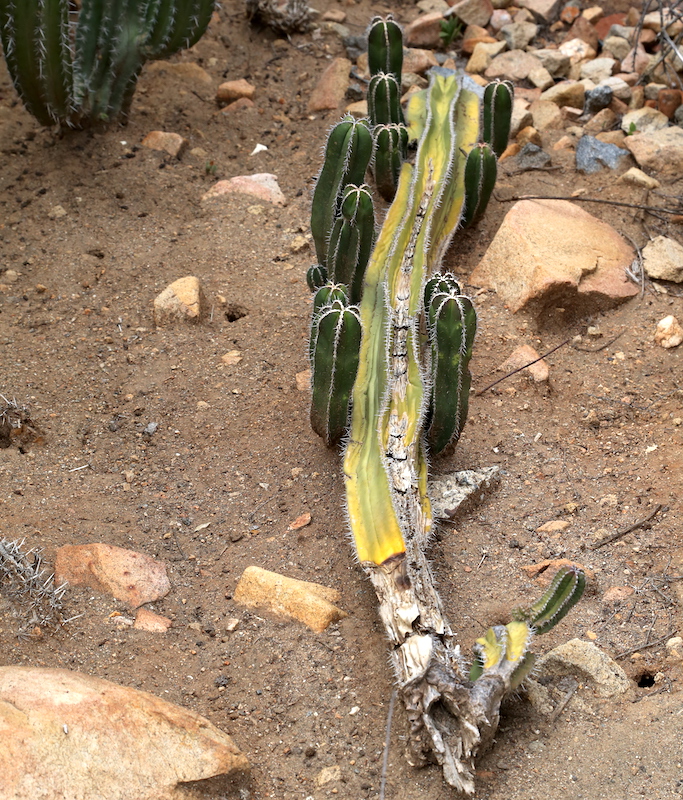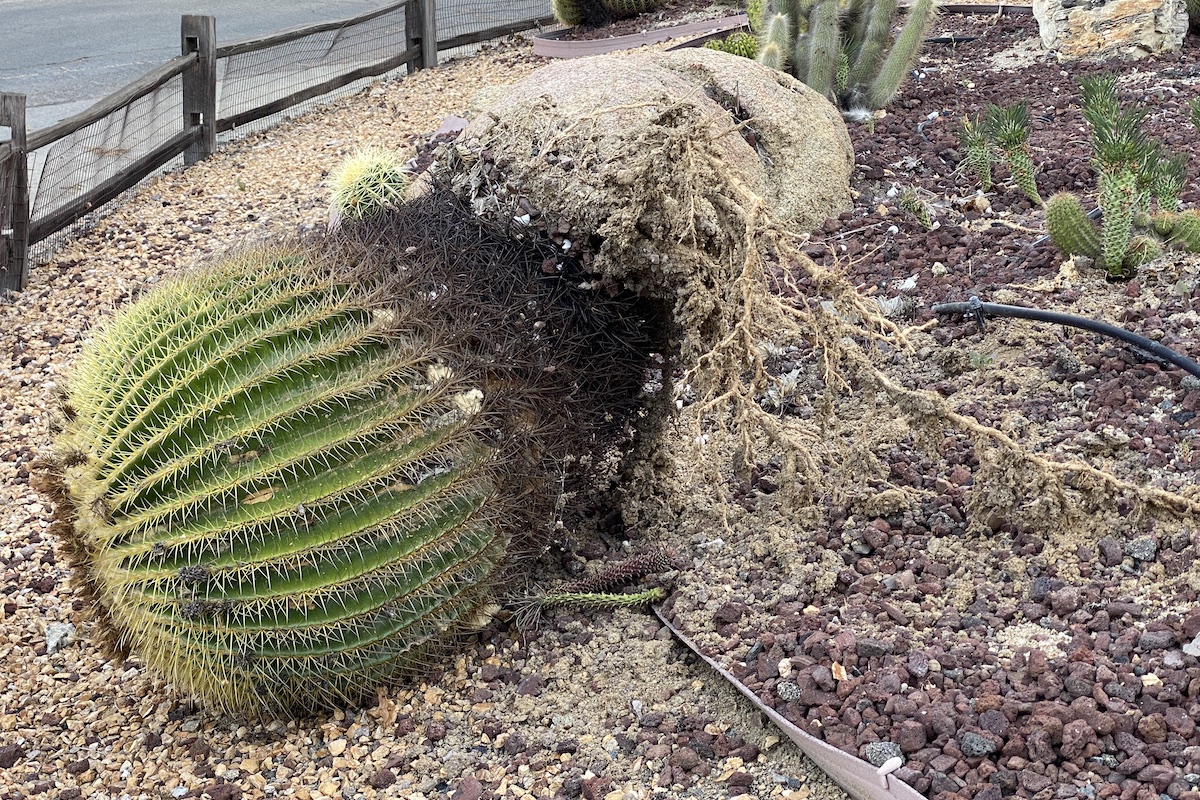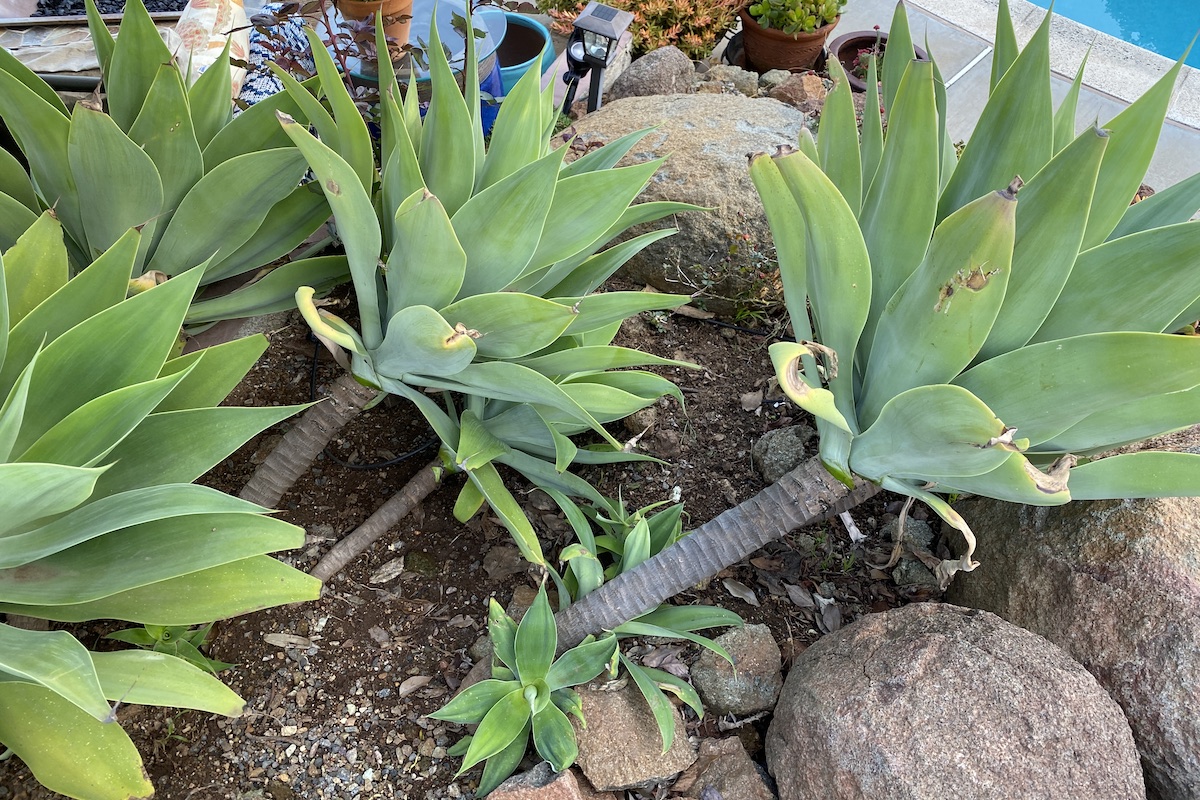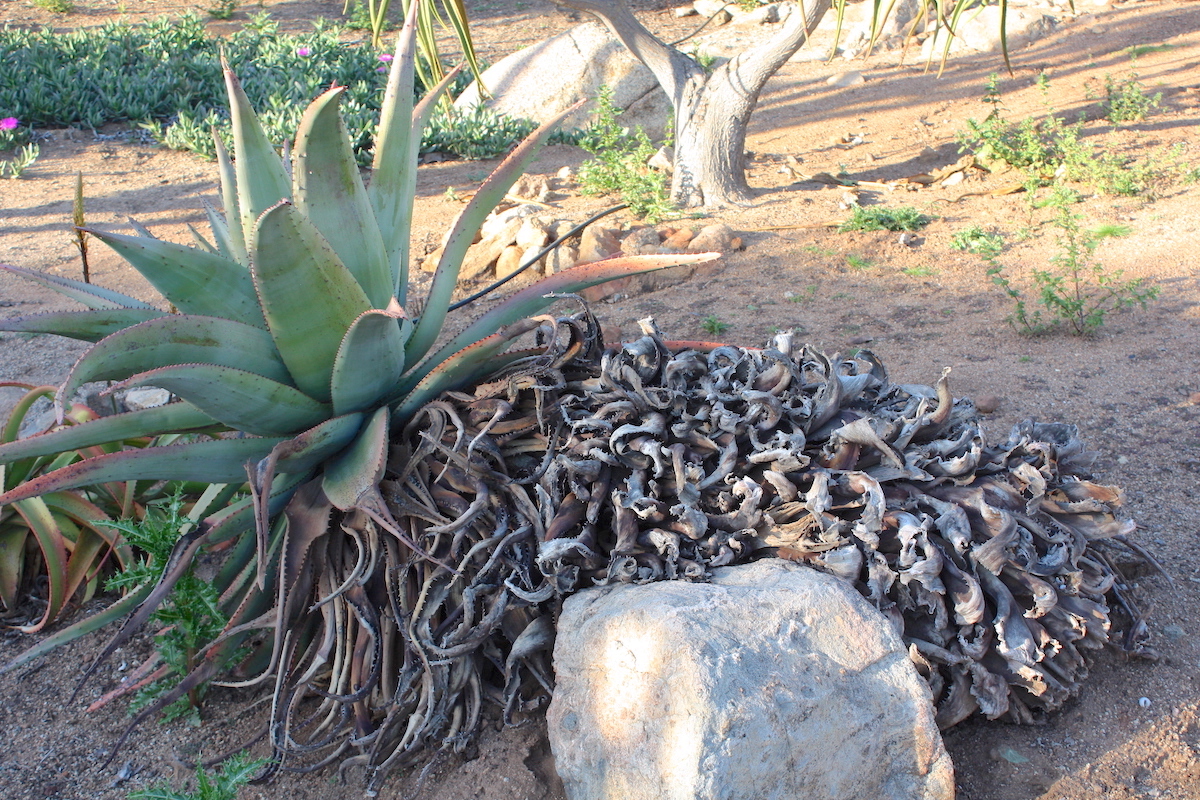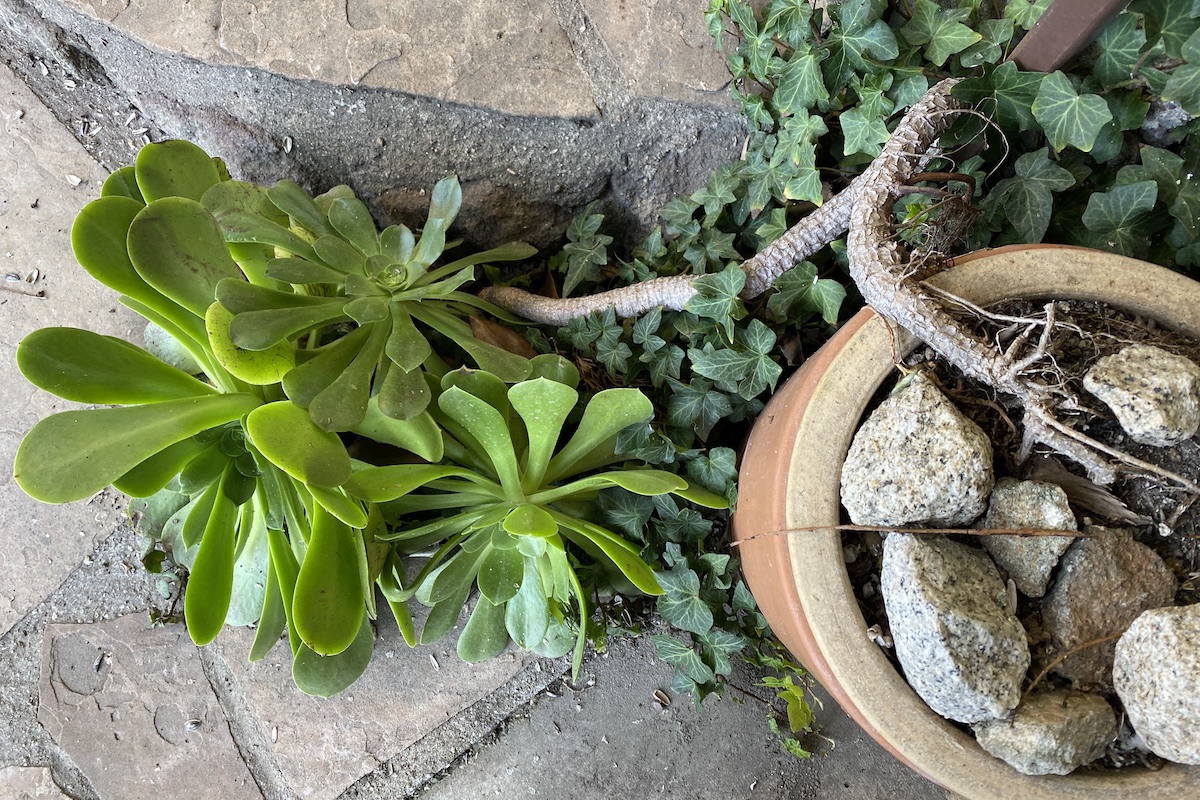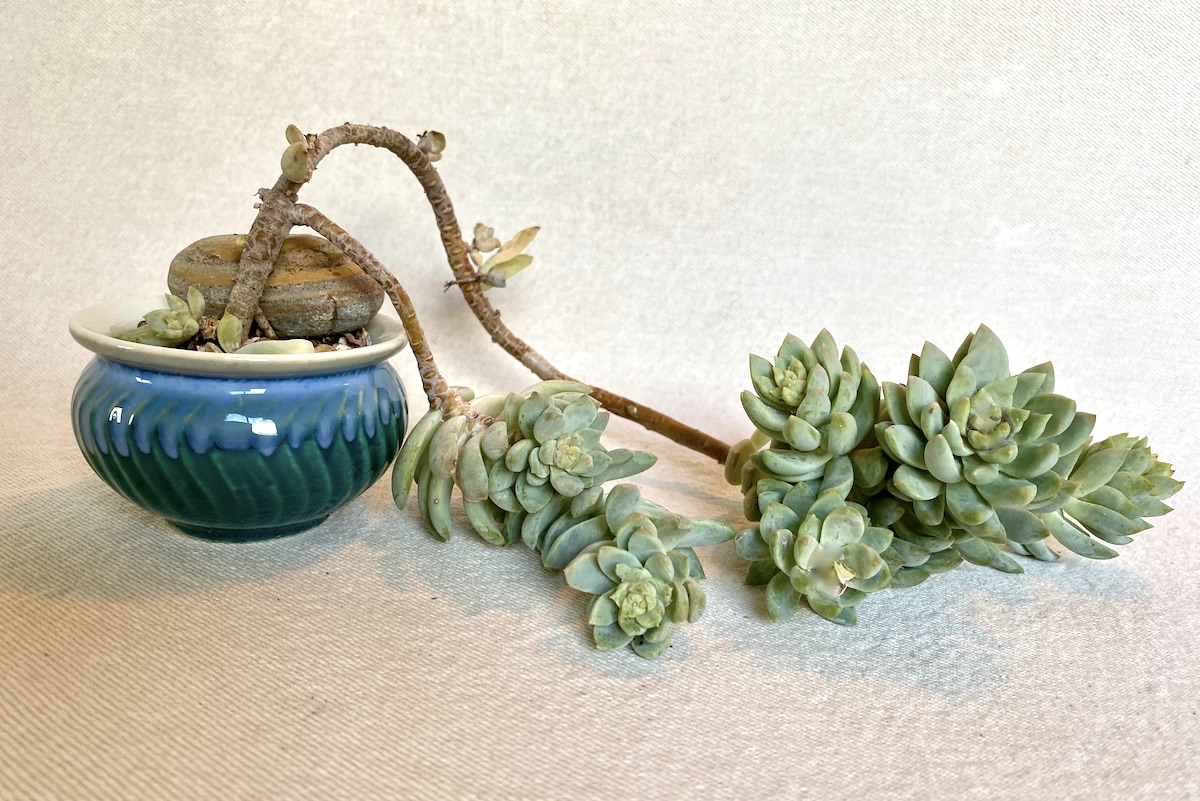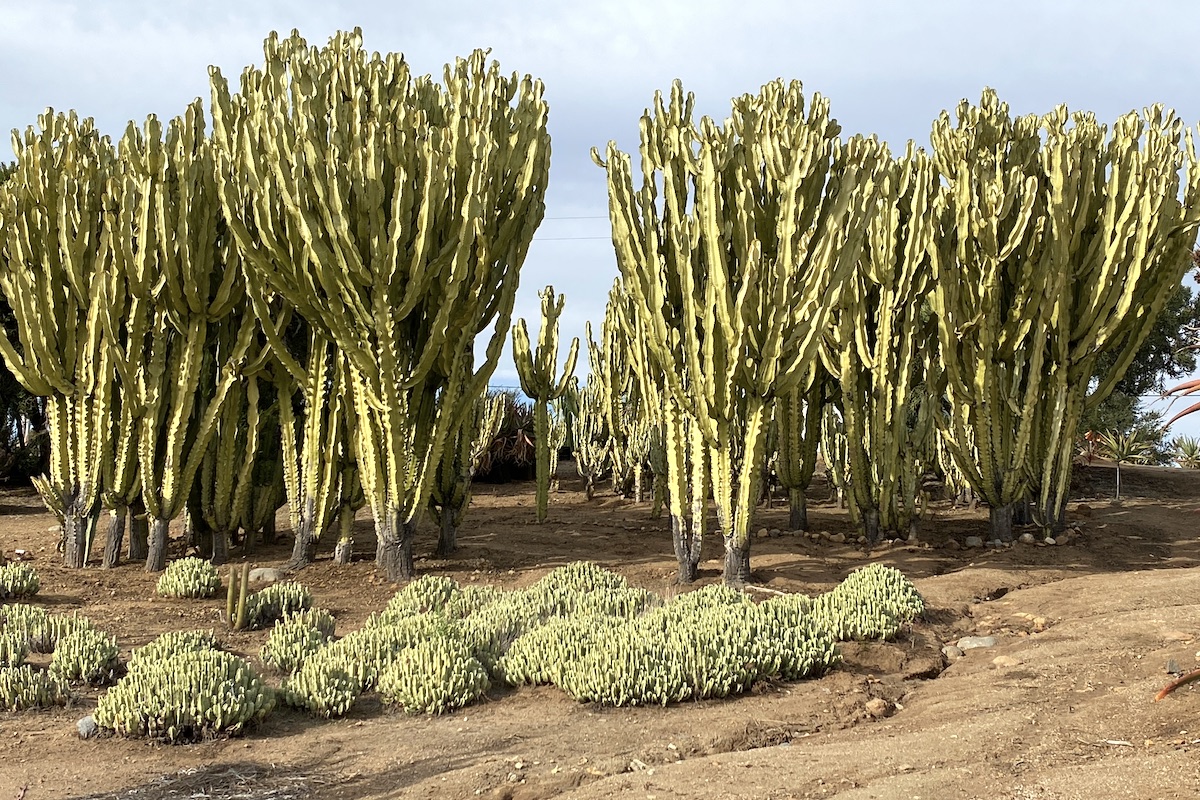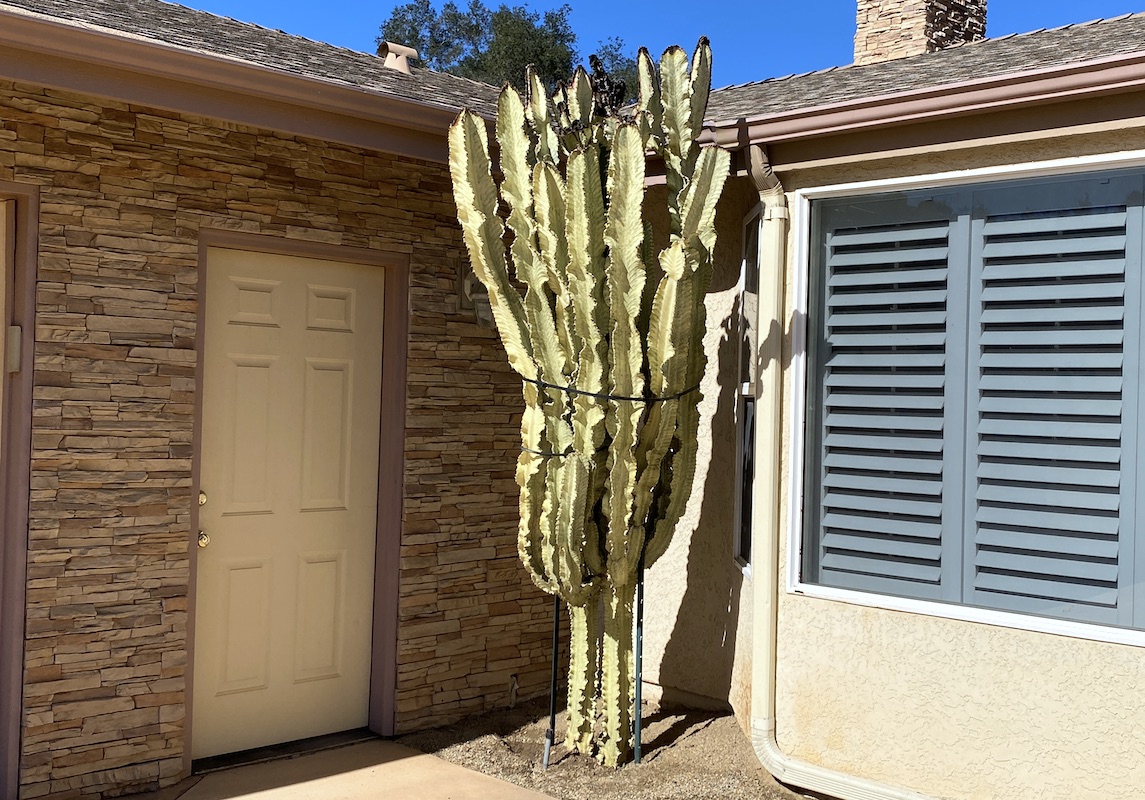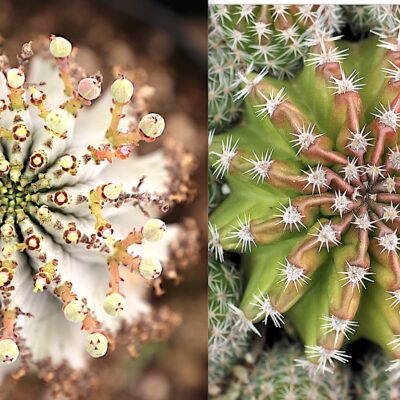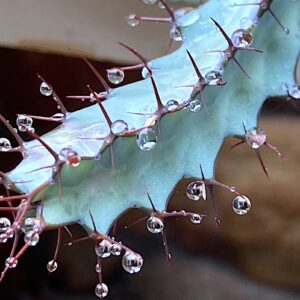If you've grown jade for years but never noticed its self-pruning ability, you may not have known that it was going on. The plants aren't like wet dogs that shake themselves, sending cuttings flying. Jade self-pruning is a glacially slow process.
Jades---Crassula ovata and its cultivars---are trouble-free, easy to come by, and form good-looking, mounded shrubs with open branching structures. Remarkably, the plants keep themselves thinned out, sometimes to the point they resemble bonsai (canopies of leaves atop thick, branching trunks).
Why grow jades?
Because of how it thins itself, Crassula ovata is extremely low-maintenance. It's also a wonderfully low-water, visual asset to any garden. Colorful jades when small are good flowerbed-fillers; larger specimens serve well as hedges and backdrop plants.
These near-perfect succulents receive "no respect" because they're common. Yet they're everywhere because they're nearly perfect! My only problem with jades is they can't handle temps below 32 degrees F. My garden gets frost every winter, but I can grow a half-dozen varieties in one linear microclimate: along an east-facing wall that absorbs heat from the sun and is sheltered by eaves and lacy trees.
Why do jades self-prune?
All shrubs benefit from good air circulation that keeps leaves clean and hinders pests from settling in. (If there's a pest that bothers jade, I'm unaware of it.) Moreover, sunlight entering the plant's center enables otherwise-shaded leaves to photosynthesize. Fallen cuttings that result from self-pruning take root, thereby propagating the plant.
What to watch for --
A stem pointing downward
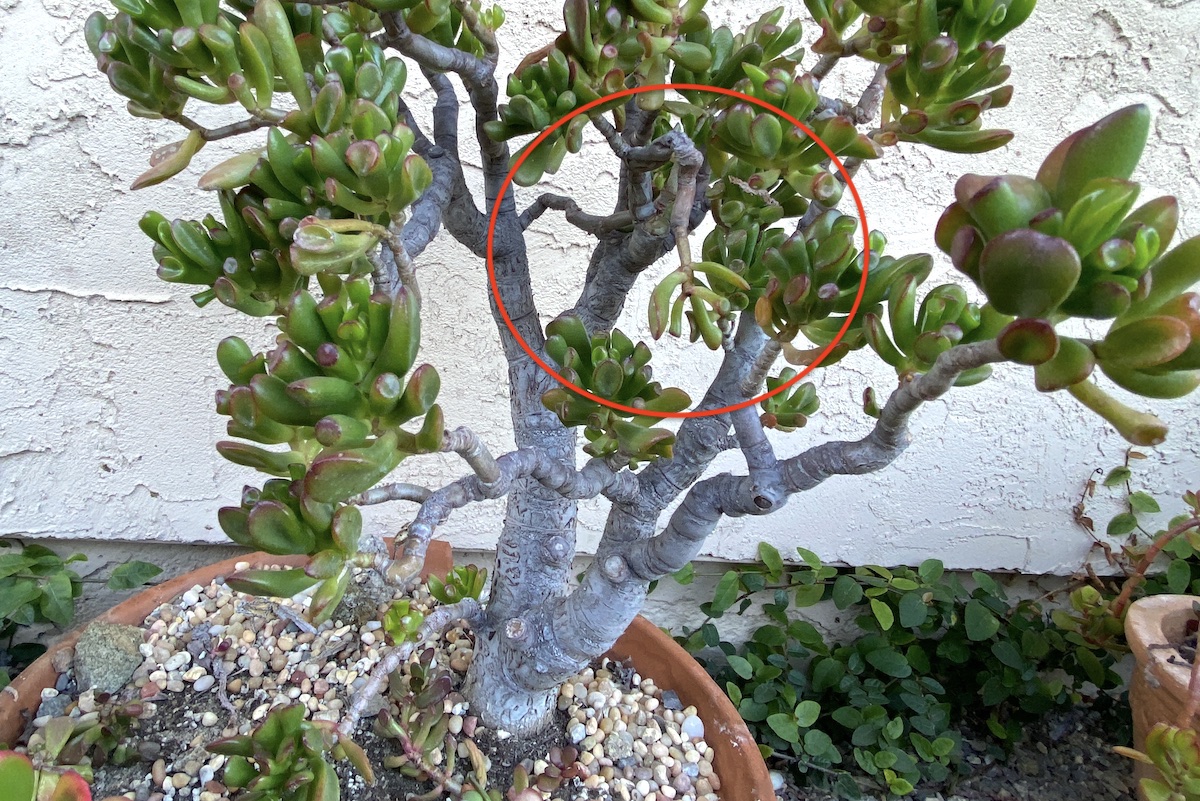
Stem beginning to wither
The process starts with a pencil-thick stem that begins to wither where it's attached to the trunk. As it shrinks and dries, leaves at the cutting's tip get smaller because they're no longer nourished by the mother plant. They're feeding off their own reserves...which come to think of it, is the very definition of a succulent: Any plant that lives off moisture in its tissues in order to survive periods of drought.
The cutting falls off
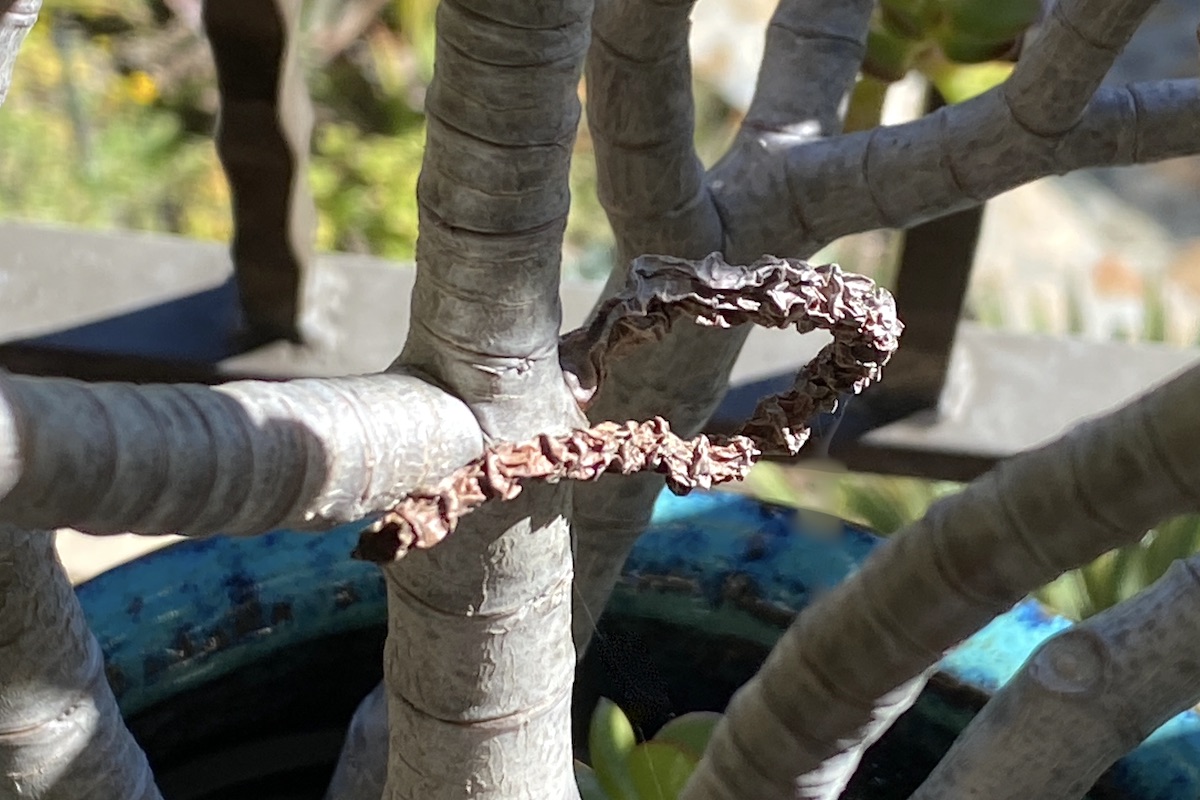
Withered stem on a potted jade
When the cutting drops to the ground, it may take its withered stem with it, or leave it behind still attached to the plant. When I first noticed withered stems on my jades I wondered if they were diseased. Soon I suspected a tendency to self-prune: They were not sick but smart.
Roots form
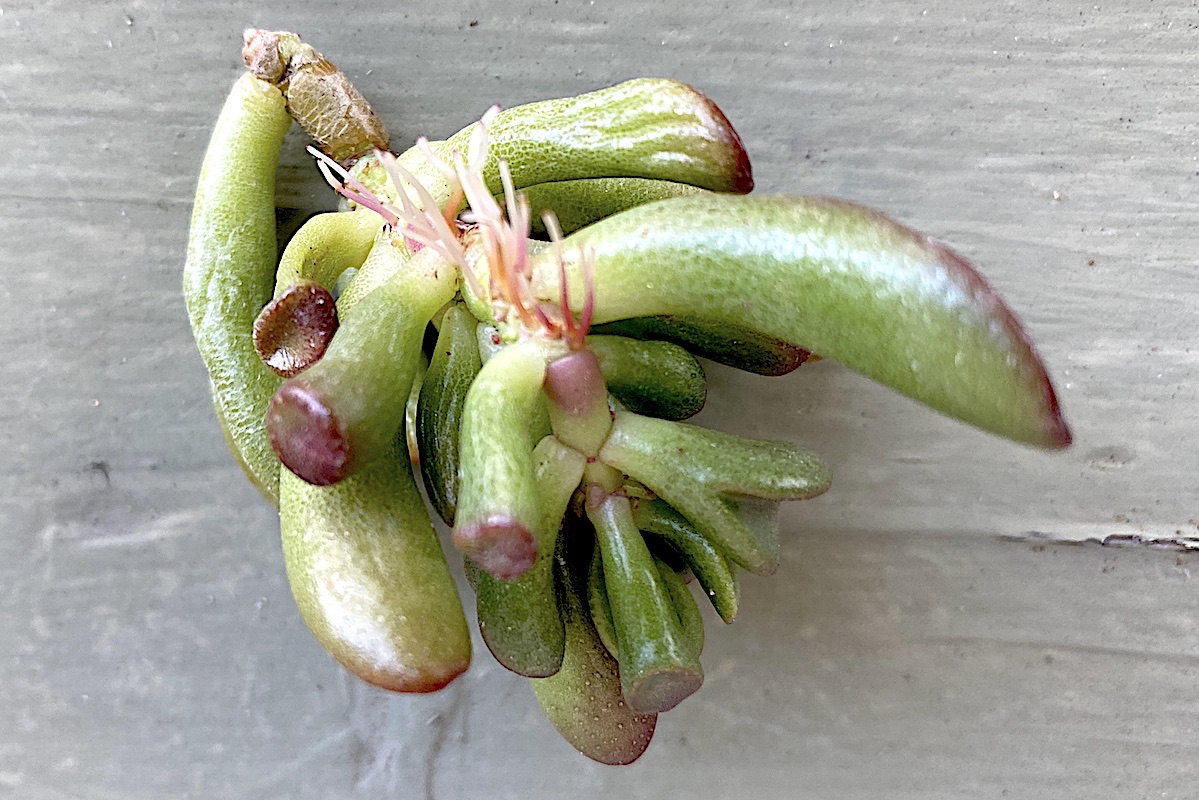
'Gollum' jade cutting with newly formed roots
When on the ground, the cutting curls. Tip leaves and stem end point upward. The rest of the C-shaped stem rests on the soil, where it's stimulated to produce roots.
To avoid sun-scorch and desiccation, the new plant needs roots to pump moisture and nutrients back into it. This takes awhile---a week at least---during which the cutting drains its lowest leaves. Self-pruning in late winter and early spring gives baby plants the benefit of moist soil and cool weather.
Lots of little plants
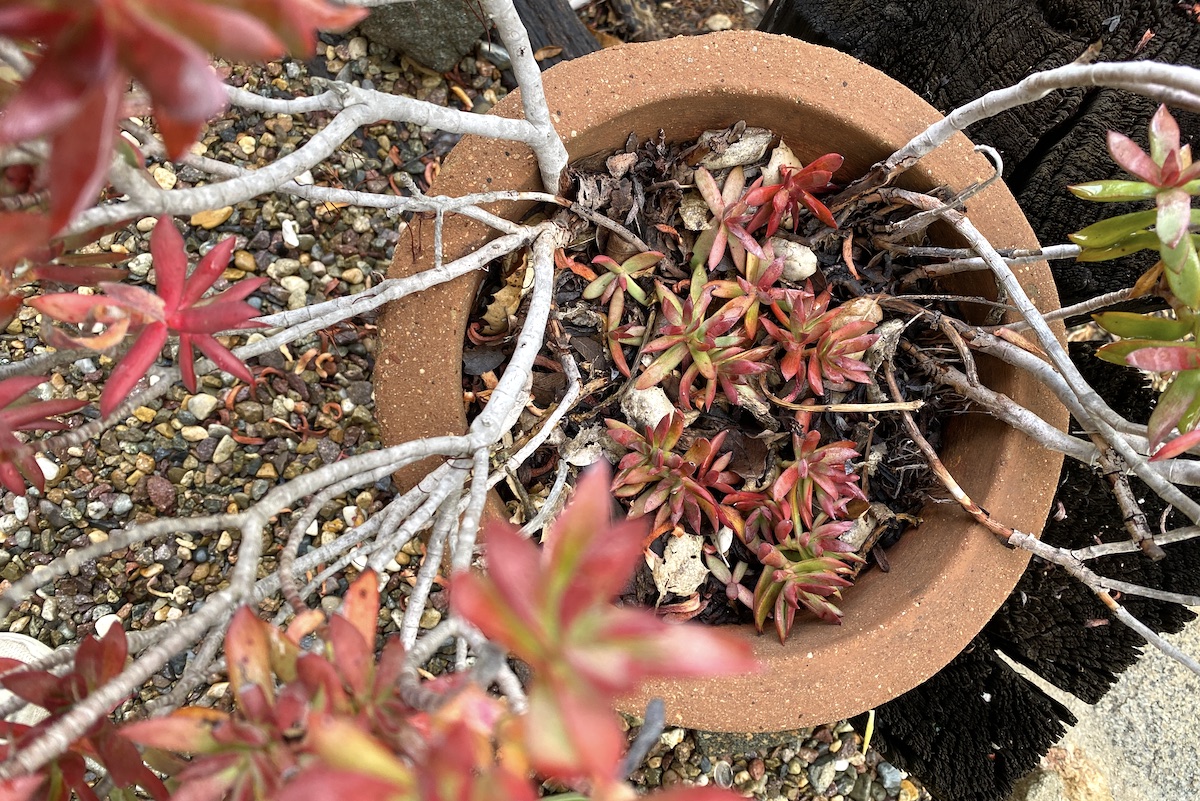
Crassula platyphylla illustrates that ovata is not the only Crassula species that self-prunes.
Fresh cuttings are green. Older ones---due to stress---turn red. They also shrivel. Before cuttings anchor themselves is a good time to place them in the garden or give them their own pot. I confess I simply toss them into gaps in the garden. If they make it, great, if they don't, no great loss.

Cuttings beneath a self-pruning jade plant
Btw, I don't especially want a pot filled with one large jade plant with a lot of itty bitty ones at its base. It's an aesthetic decision, but I like my jades to be the stars of their pots.
What's going on here?

Crassula ovata ('Gollum' jade); circles indicate self-pruning
In this photo, the stem at upper left (red circle) is starting to wither. The blue circle shows a scar from where a stem previously fell off. The pink circle is where I took a cutting a year or so earlier. Doing so caused the stem to branch at the cut end ("bifurcate").
Note too the bands of tissue along the trunk and stems; they're where new roots would form should the plant be cut apart and replanted as cuttings.
Maybe they simply broke off?
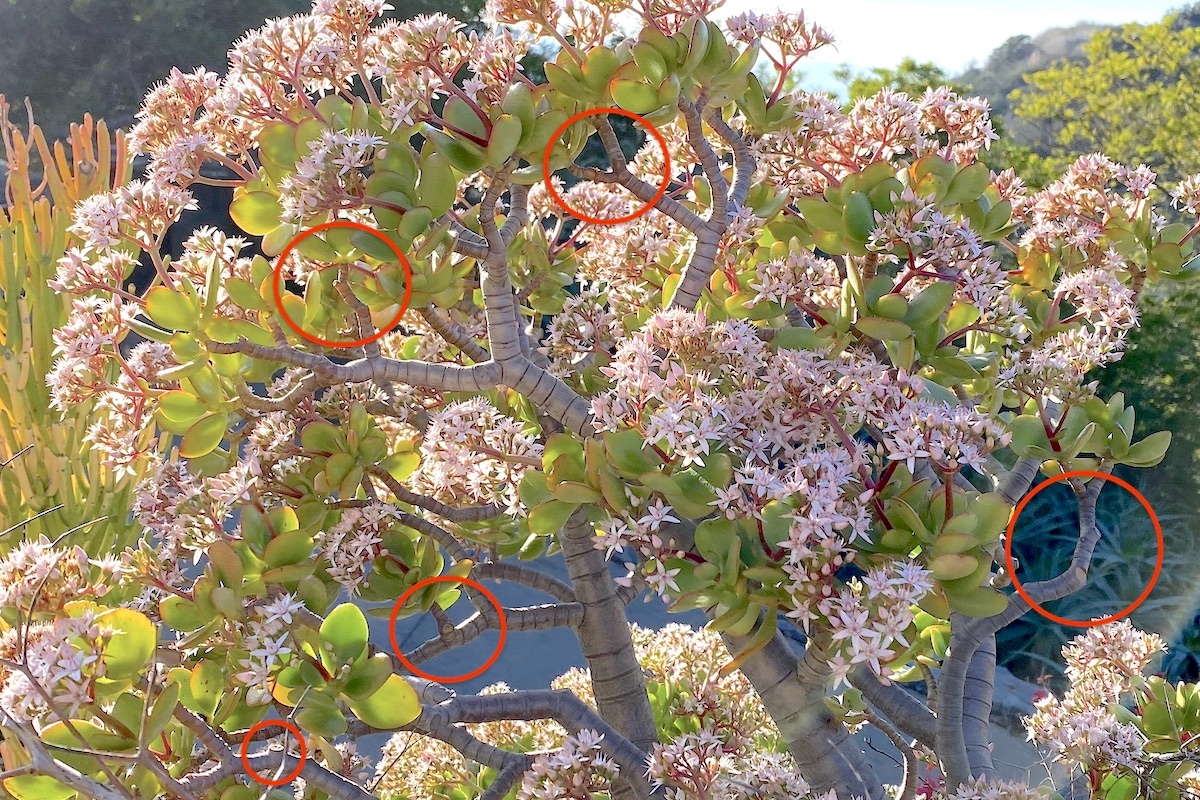
Circles indicate scars from missing stems
In this photo, I circled stem scars that resulted either from self-pruning or breakage. Jade is easy to take cuttings from---simply cut or snap them off. Breakage can be a result of impact, like a child or big dog running into the plant. That said, jade stems are by no means brittle and have some flexibility.
Help me learn more
A question I have is why jades in pots tend to prune themselves more than in-ground ones. Possibly a pot offers minimal soil, and the plant dwarfs itself like a goldfish that doesn't outgrow its bowl. But that doesn't explain why jades get so large in pots they become top-heavy and fall over.
If you have an opinion, observation or question, do leave a comment below. Thanks!
The post How Jade Prunes Itself appeared first on Debra Lee Baldwin. Copyright © Debra Lee Baldwin.
from Debra Lee Baldwin https://ift.tt/RB2meGY
via IFTTT

